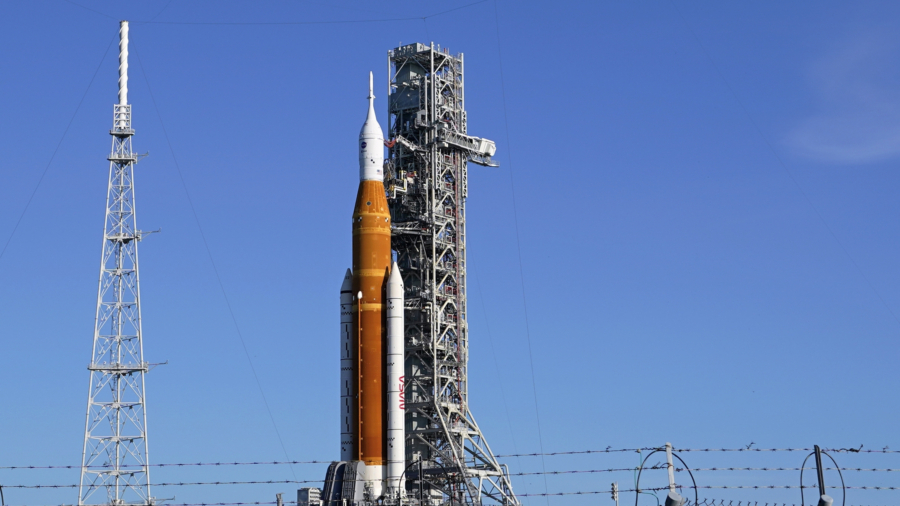A recent audit from NASA’s Office of the Inspector General (OIG) came to the conclusion that its Space Launch System (SLS) rocket development program is well over budget and far behind its original schedule.
So far, NASA’s spending on “the most powerful rocket ever built” amounts to $23.8 billion through 2022, a sum representing “$6 billion in cost increases and over six years in schedule delays above NASA’s original projections,” according to the OIG’s report (pdf).
NASA’s Artemis Moon Program—which utilizes the SLS rockets—is projected to reach a total cost of $93 billion by 2025. To avoid or minimize the “additional cost and schedule increases” it foresees, the OIG’s report made eight recommendations.
NASA’s management concurred with all recommendations, albeit only partially with three.
The Artemis moon mission project is a continuation of the Constellation program, which was launched in 2005 with the goal of returning astronauts to the moon by 2020 and, eventually, to Mars. The program was canceled by the Obama administration in 2010.
However, the NASA Authorization Act of the same year mandated the construction of the SLS rockets. To save costs and resources, congress directed NASA to repurpose existing technology, contracts, and personnel for the new project.
According to the OIG audit, Washington’s assumption that the repurposing of technologies from the Space Shuttle and Constellation programs would result in significant cost and schedule savings, compared to developing an entirely new rocket system, proved erroneous.
“The complexity of developing, updating, and integrating new systems along with heritage components proved to be much greater than anticipated,” the report stated.
In addition to two boosters, the SLS rockets need four expendable RS-25 engines per launch. At the moment, NASA has 16 such engines on hand that were salvaged from retired Space Shuttles, but despite rising costs, only 5 of the 16 engines have been upgraded to fit their new purpose so far.
Once these 16 engines have been used, NASA will switch to a newer model, the RS-25E engine, built by Aerojet Rocketdyne, which should be 30 percent cheaper and 11 percent more powerful.
The solid fuel boosters strapped to the side of the SLS rockets have seen the biggest cost increase—up from $2.5 billion to $4.4 billion since the Artemis project was announced in 2017, and five years behind schedule now.
The Inspector General, who previously sounded the alarm in congress about NASA’s “unsustainable” spending, attributes the excessive cost increases to NASA’s frequent use of “cost-plus” contracts—which allow suppliers to inflate budgets relatively easily—as opposed to fixed-price contracts.
The report also framed NASA’s contractor evaluation system as excusing cost and schedule overages “so long as the end product performs well.”
The first SLS rocket launched successfully in November 2022, sending the Orion spacecraft—equipped with three astronaut-like mannequins—to complete a flyby trip around the moon.
In general, the OIG perceived “a lack of management controls, internal and external stakeholder involvement beyond the established process, poor communication, and lack of sufficient training.”
The report concluded that it is imperative that NASA does not erode the public’s trust of spending taxpayer money responsibly, much less compromise its mission to return humans to the moon and to send them “onward to Mars.”


